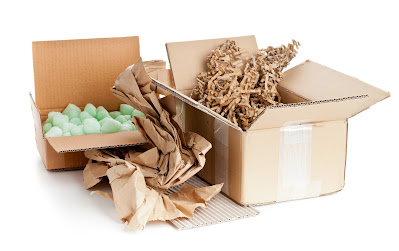Protective packaging is an essential component of the supply
chain, used to protect goods during transportation and storage. However,
traditional protective packaging materials such as foam, plastic bubble wrap,
and peanuts are often made from non-biodegradable materials and can cause
significant environmental harm. As a result, there is an urgent need for
sustainable protective packaging solutions.
Sustainable Protective Packaging Materials
Sustainable protective packaging materials, such as paper,
cardboard, and bioplastics, are made from biodegradable or recyclable materials.
Traditional packaging materials, which take hundreds of years to break down and
can hurt wildlife and ecosystems, can be replaced with these materials.
Paper-based materials are a popular sustainable protective
packaging solution due to their biodegradability and recyclability. They are
also lightweight and easy to customize, making them an ideal choice for
packaging fragile goods.
Cardboard is another popular sustainable protective
packaging material commonly used in boxes and shipping containers. It is
durable, lightweight, and recyclable, making it an excellent choice for
protecting goods during transportation.
Bioplastics are a newer type of sustainable protective packaging
material made from renewable resources such as cornstarch, sugarcane, and
cassava. Bioplastics are biodegradable and compostable, making them an
excellent choice for protecting goods while reducing environmental impact.
Sustainable Protective Packaging Design
In addition to choosing sustainable packaging materials,
sustainable protective packaging design is essential to reducing environmental
impact. Sustainable protective packaging design involves using the minimum
amount of packaging material necessary to protect goods during transportation
and storage.
One example of sustainable protective packaging design is
using custom-fit packaging. Custom-fit packaging involves designing packaging
that fits a product's exact dimensions, reducing the amount of excess packaging
material needed.
Another example of sustainable protective packaging design
is using reusable packaging. Reusable packaging involves designing packaging
that can be used multiple times, reducing the amount of packaging material
needed overall.
Benefits of Sustainable Protective Packaging
There are numerous benefits to using sustainable protective
packaging:
·
Sustainable protective packaging reduces
environmental impact by using biodegradable or recyclable materials.
·
Sustainable protective packaging can reduce
shipping costs by using lightweight materials and reducing the amount of excess
packaging material needed.
·
Sustainable protective packaging can enhance a
company's reputation by demonstrating a commitment to environmental
sustainability.
Conclusion
In conclusion, sustainable protective packaging is
essential for reducing environmental impact and protecting goods during
transportation and storage. Using sustainable packaging materials and packaging
design, companies can reduce their environmental impact, save on shipping
costs, and enhance their reputation. With the urgent need for sustainable
protective packaging solutions, companies must prioritize sustainable packaging
practices to protect both their products and the environment.

Comments
Post a Comment